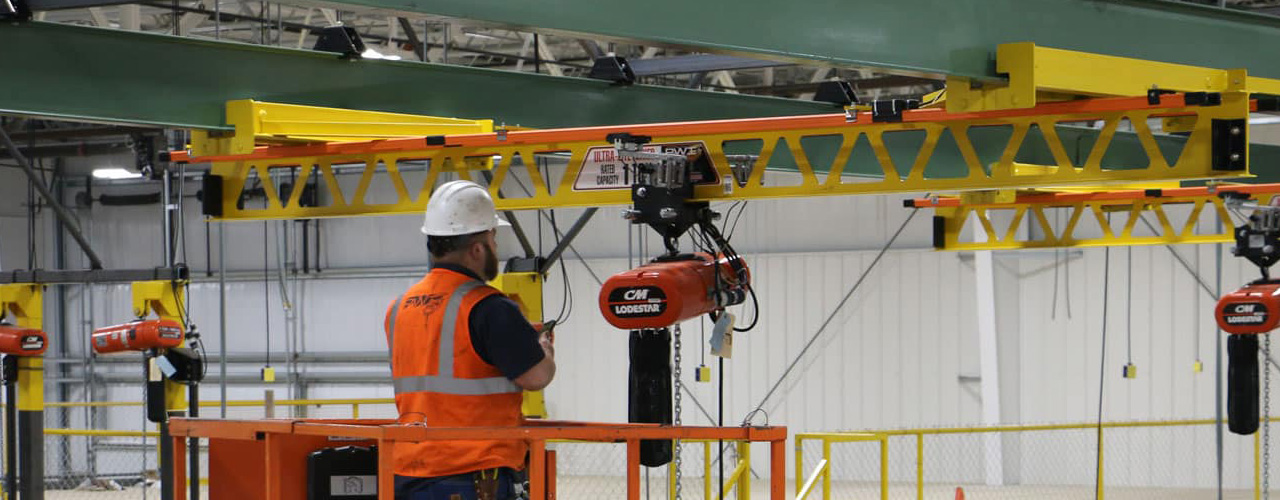
Steel structure repair
Main beam/end beam correction: Detect deformation, cracking or deflection, and use flame correction or mechanical correction to restore accuracy.
Weld repair: Repair cracks, pores and other defects to ensure welding strength.
Bolt tightening: Check the preload of high-strength bolts and replace loose or rusted bolts.
Lifting mechanism maintenance
Wire rope replacement: Check wire breakage and wear, and replace wire rope with a safety factor.
Pulley block maintenance: Replace worn pulleys and bearings to ensure rope groove matching.
Drum inspection: Check drum rope groove wear and cracks, and repair or replace if necessary.
Running mechanism maintenance
Wheel block adjustment: Check wheel rim wear and rail gnawing, and adjust wheel parallelism.
Track maintenance: Correct track straightness and horizontality, and tighten pressure plate bolts.
Reducer maintenance: Replace lubricating oil and repair gear wear or oil leakage.

Motor and brake maintenance
Motor fault detection: Check winding insulation, bearing abnormal noise, repair or replace the motor.
Brake adjustment: Check brake pad wear, adjust braking torque, and ensure reliable braking.
Control circuit maintenance
Contactor/relay replacement: Repair contact burnout and coil failure.
PLC/inverter debugging: Optimize parameters to solve inverter overload and overcurrent problems.
Limit switch calibration: Adjust lifting and travel limits to prevent top or overtravel.
Cable and busbar maintenance
Cable replacement: Repair damaged cables to prevent short circuit or leakage.
Busbar inspection: Clean dust and calibrate collector contact pressure.

Hydraulic pump/motor maintenance: Check pressure and flow, and replace worn parts.
Cylinder maintenance: Repair leaks and replace seals.
Hydraulic valve debugging: Clean or replace blocked solenoid valves and overflow valves.
Oil circuit cleaning: filter or replace hydraulic oil to remove impurities from the system.

Overload limiter calibration: ensure that the power supply is automatically cut off when overloaded.
Anti-collision system debugging: adjust the sensitivity of laser or ultrasonic sensors.
Wind speed alarm test: ensure that the equipment is automatically locked in windy weather.
Emergency stop function check: verify the response speed of the emergency stop button.

Regular lubrication: add grease to key parts such as wire ropes, bearings, gears, etc.
Structural inspection: detect rust on the main beam and loose bolts.
Electrical system inspection: measure insulation resistance and check the tightness of the terminal blocks.
Operation test: no-load/load test run, record equipment operation data.

Annual maintenance contract: provide regular inspection and priority repair services.
Operation training: guide correct use and daily inspection methods.
Equipment health assessment: issue inspection reports and predict potential failures.

